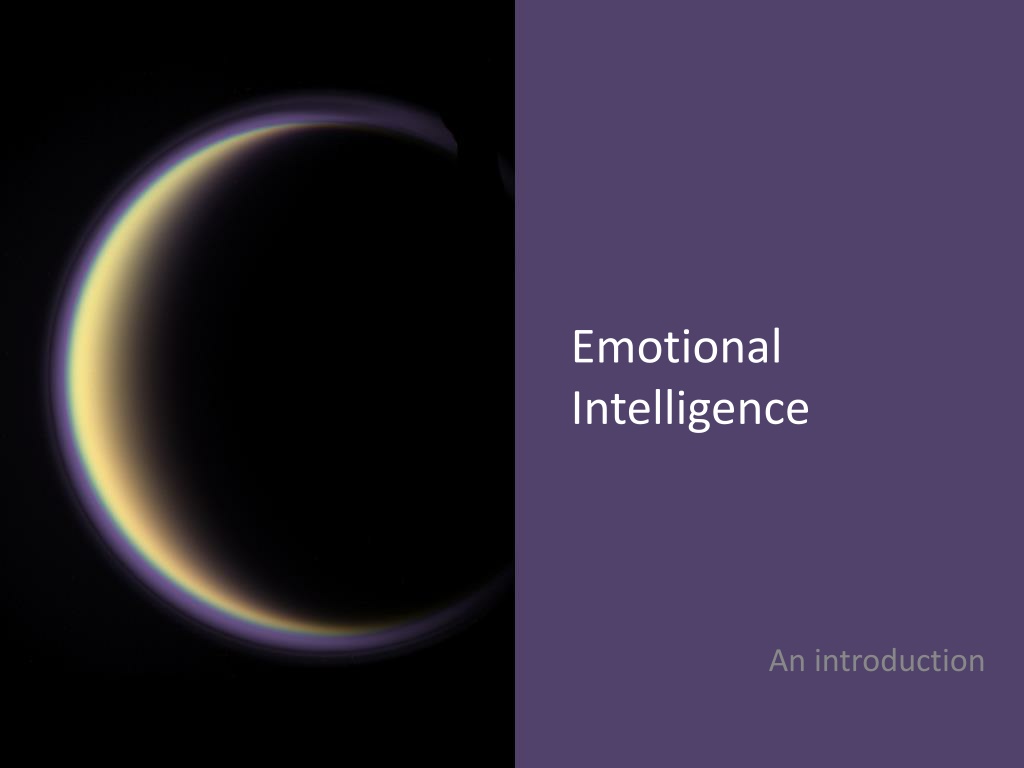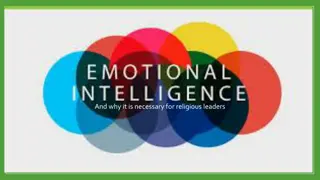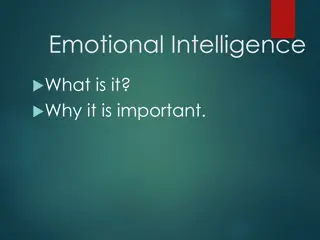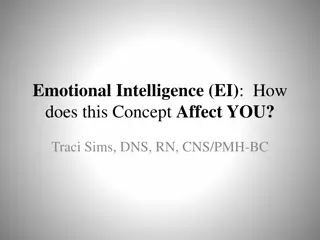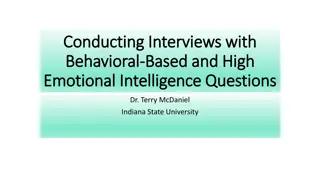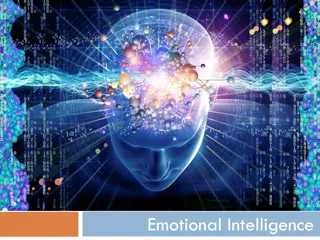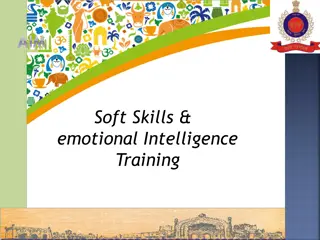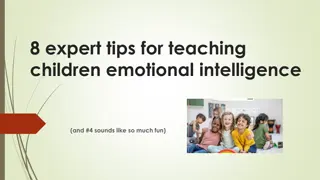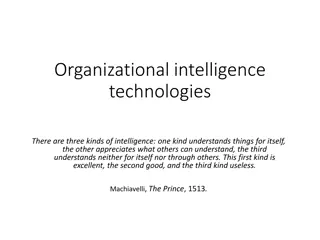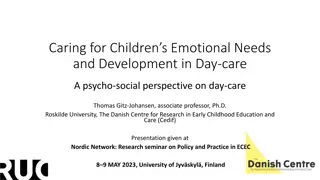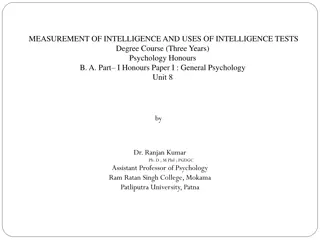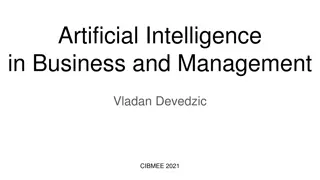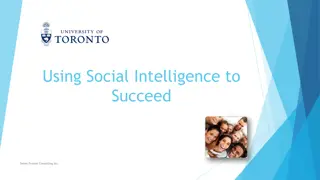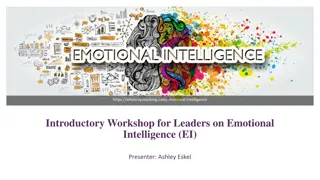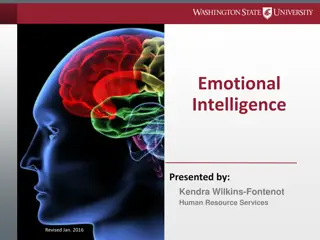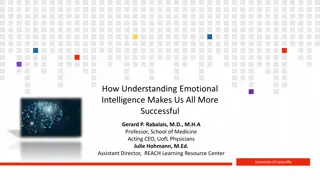Understanding Emotional Intelligence: An Overview
Emotional Intelligence (EI) is a crucial aspect of human behavior that encompasses the ability to perceive, use, understand, and manage emotions effectively. Originating from scholarly research dating back thousands of years, EI became popularized in 1990 by John Mayer and Peter Salovey. This article delves into various models of EI, debunking myths and exploring the components of EI such as self-awareness, social skills, self-regulation, empathy, and motivation. By recognizing the importance of EI and its impact on personal and professional success, individuals can enhance their emotional abilities for better outcomes.
Download Presentation

Please find below an Image/Link to download the presentation.
The content on the website is provided AS IS for your information and personal use only. It may not be sold, licensed, or shared on other websites without obtaining consent from the author. Download presentation by click this link. If you encounter any issues during the download, it is possible that the publisher has removed the file from their server.
E N D
Presentation Transcript
Emotional Intelligence An introduction
Emotional Intelligence AIM To introduce and establish the importance of emotional intelligence OBJECTIVES To be aware of the different models of EI To take away a quick win; a simple action point To recognise how five EI components function
Background EI has always been here, we ve just got better at defining it scholarly articles show EI was known about 3,000 years ago the phrase emotional intelligence was coined by John Mayer and Peter Salovey in 1990 Daniel Goleman: go to author and specialist in the field EI (sometimes referred to as EQ) is about abilities that are distinct from - but complementary to - academic intelligence (IQ) (1995) Emotional Intelligence: Why It Can Matter More Than IQ
Myths Sheldon Penny Rachel
EI Models Ability emotional perception, use of emotion, understanding emotion and managing emotion Trait how you perceive your emotional abilities, is deeply subjective and is resistant to measurement Bar-on differentiating between the ability to affect others, regulating own emotions and an ability to cope Genos - transforming negative into productive characteristics and comprises seven dimensions Mixed self-awareness, self regulation, motivation, empathy and social skills
EI Mixed model Self Awareness Social Skills Self Regulation Five categories Empathy Motivation
EI Mixed model emotional awareness an ability to recognise your own emotions and their effects self-confidence sureness about your self worth and capabilities
EI Mixed model self control managing disruptive impulses trustworthiness maintaining standards of integrity conscientiousness responsibility for your own performance adaptability handling change with flexibility innovation being open to new ideas
EI Mixed model achievement drive constant striving to improve or meet a standard of excellence commitment aligning with the goals of your group or organisation initiative readying yourself to act on opportunities optimism pursuing goals persistently despite obstacles or setbacks
EI Mixed model service orientation anticipating, recognising and meeting clients needs developing others sensing what others need to progress and strengthening their abilities diversity cultivating opportunities through diverse people political awareness reading your group s emotional currents understanding others discerning the feelings behind the needs and wants of others
EI Mixed model connection building effective relationships influence effective persuasion tactics communication clear messages leadership inspiring and guiding catalyse initiating and managing change partnership realising shared goals conflict understanding and resolving problems
EI Quick win Lets challenge ourselves to make a positive EI change by starting to do, or by doing more of: 1. making others comfortable in social situations 2. differentiating between having an emotion and doing something about it 3. replacing selective listening with attentive listening 4. focusing on body language and translating its meaning 5. helping someone through the change curve 6. altering your response to setbacks and obstacles 7. noticing!
Emotional Intelligence AIM To introduce and establish the importance of emotional intelligence OBJECTIVES To be aware of the different models of EI To take away a quick win; a simple action point To recognise how five EI components function
Adrian Nash 01376 337063 www.radius360.co.uk
